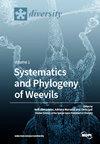Patterns of Diversity, Structure and Local Ecology of Arthropod-Pathogenic Fungi in the Amazonian Forest of Cusco and Madre de Dios Regions, Southern Peru
IF 2.1
3区 生物学
Q2 BIODIVERSITY CONSERVATION
引用次数: 0
Abstract
The ecological role and potential management of arthropod-pathogenic fungi (APF) in neotropical forests are of great importance, but they are still little studied. The present study achieves a first estimation of diversity patterns, structure and local ecology of APF in the Amazonian forests of the Cusco and Madre de Dios regions in southern Peru. We sampled 39 localities in five basins, examining 277 specimens, four families and 20 genera with 82 species (40% morphospecies). The most diverse families were Cordycipitaceae with 51 species and Ophiocordicipitaceae (22). Cusco obtained a greater diversity: four families, 18 genera and 58 morphospecies, with the Urubamba and Amarumayu basins having greater diversity (31 and 20 species); for the Madre de Dios basin, there was 28 species. In both regions, the richness values were corroborated by Fisher’s Alpha and Chao-1 indexes, the latter identifies Amarumayu and Araza with maximum values. The NMDS analysis showed a good pattern of separation of the two APF communities, although an important group was shared. Elevation was identified as the environmental variable with the strongest influence on diversity and structure. The dominance analysis identified Ophiocordyceps australis and Paraisaria amazonica as hyperdominant, due to their density and distribution. The local ecological patterns in Pongo de Qoñec show that the richness of entomopathogens is largely favored by low understory light, associated with pristine or little-impacted habitats. We conclude that this first approximation of the knowledge of the high diversity of APF in southern Peru is still insufficient, but it demonstrates the importance of their conservation and represents enormous potential for sustainable management.秘鲁南部库斯科和马德雷德迪奥斯地区亚马逊森林节肢动物病原真菌多样性、结构和局部生态格局
节肢动物致病性真菌(APF)在新热带森林中的生态作用和潜在管理具有重要意义,但目前对其的研究还很少。本研究首次估计了秘鲁南部库斯科和马德雷德迪奥斯地区亚马逊森林中APF的多样性格局、结构和当地生态。我们在5个流域的39个地点采集了277个标本,隶属4科20属82种(形态种占40%)。种类最多的科为冬虫夏草科(51种)和蛇鞭草科(22种)。库斯科的多样性更大,有4科18属58种形态,乌鲁班巴盆地和阿玛鲁玛尤盆地的多样性更大(31种和20种);Madre de Dios盆地则有28种。两个地区的丰富度值均得到Fisher’s Alpha指数和Chao-1指数的证实,Chao-1指数确定了Amarumayu和Araza的最大值。NMDS分析显示,两个APF群落具有良好的分离模式,尽管有一个重要的类群是共享的。海拔是对多样性和结构影响最大的环境变量。优势度分析表明,南方蛇虫草(Ophiocordyceps australis)和亚马逊副蛇虫草(Paraisaria amazonica)因其密度和分布而具有超优势。Pongo de Qoñec的局部生态格局表明,昆虫病原体的丰富程度在很大程度上受低林下光照的影响,与原始或受影响较小的栖息地有关。我们得出的结论是,对秘鲁南部APF高度多样性的初步估计仍然不足,但它表明了其保护的重要性,并代表了可持续管理的巨大潜力。
本文章由计算机程序翻译,如有差异,请以英文原文为准。
求助全文
约1分钟内获得全文
求助全文
来源期刊

Diversity-Basel
Environmental Science-Ecological Modeling
CiteScore
3.40
自引率
12.50%
发文量
925
审稿时长
11 weeks
期刊介绍:
Diversity (ISSN 1424-2818) is an international and interdisciplinary journal of science concerning diversity concept and application, diversity assessment and diversity preservation. It is focused on organismic and molecular diversity. It publishes reviews, regular research papers and short notes in the regular issues. Related news and announcements are also published. Our aim is to encourage scientists to publish their experimental and theoretical results in as much detail as possible. Therefore, there is no restriction on the length of the papers. Full experimental details must be provided so that the results can be reproduced.
 求助内容:
求助内容: 应助结果提醒方式:
应助结果提醒方式:


